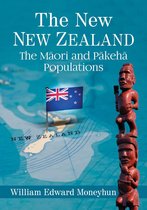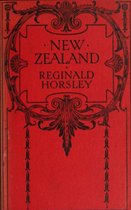The New Zealand Wars 1820-72 Ebook Tooltip Ebooks kunnen worden gelezen op uw computer en op daarvoor geschikte e-readers.
Afbeeldingen
Sla de afbeeldingen overArtikel vergelijken
Auteur:
Ian Knight
Raffaele Ruggeri
- Engels
- E-book
- 9781780962795
- 20 maart 2013
- 48 pagina's
- Adobe ePub
Samenvatting
Between 1845 and 1872, various groups of Maori - the Polynesian people who had inhabited New Zealand since medieval times - were involved in a series of wars of resistance against British settlers, which in many ways mirrored the American Indian Wars. Like some Native Americans, the Maori had a fierce and long-established warrior tradition (epitomized today by the intimidating haka war-challenge performed by the All Blacks rugby team), and lived in tribal communities dispersed throughout rough and thickly wooded terrain. Subduing them took a lengthy British Army commitment, only surpassed in the Victorian period by that on the North-West Frontier of India.
Warfare had been endemic in pre-colonial New Zealand - in contests over territory and group prestige, and in generations-long feuds - and Maori groups maintained fortified villages or pas. The small early British coastal settlements, also widely dispersed, were tolerated, and in the 1820s a chief named Hongi Hika travelled to Britain with a missionary and returned laden with gifts. He promptly exchanged these for muskets, and began an aggressive 15-year expansion at the expense of neighbouring tribes. When new waves of major British settlement arrived between the 1840s and 1860s, competition over the available productive land caused increased friction and clashes. British troops were shipped in, and fought a series of essentially local wars in both North and South Islands over more than 25 years. However, some Maori groups always allied themselves with the Europeans, in pursuit of ancient enmities with their neighbours.
By the 1860s many Maori had acquired firearms and had perfected their bush-warfare tactics. Their defences also evolved, with conspicuous log fortifications giving way to deep entrenchments less visible and vulnerable to artillery. The British, too, were adapting their uniforms, equipment and tactics to broken-country fighting in the bush, and employing more portable artillery and mortars. In the last phase of the wars a religious movement, Pai Maarire ('Hau Hau'), inspired remarkable guerrilla leaders such as Te Kooti Arikirangi to renewed resistance. This final phase saw a reduction in British Army forces as operations were increasingly taken over by locally recruited constabulary and militia units. European victory was not total, but led to a negotiated peace that preserved some of the Maori people's territories and freedoms; in modern times this has allowed a real (if sometimes strained) progress towards a genuinely unified national identity.
Warfare had been endemic in pre-colonial New Zealand - in contests over territory and group prestige, and in generations-long feuds - and Maori groups maintained fortified villages or pas. The small early British coastal settlements, also widely dispersed, were tolerated, and in the 1820s a chief named Hongi Hika travelled to Britain with a missionary and returned laden with gifts. He promptly exchanged these for muskets, and began an aggressive 15-year expansion at the expense of neighbouring tribes. When new waves of major British settlement arrived between the 1840s and 1860s, competition over the available productive land caused increased friction and clashes. British troops were shipped in, and fought a series of essentially local wars in both North and South Islands over more than 25 years. However, some Maori groups always allied themselves with the Europeans, in pursuit of ancient enmities with their neighbours.
By the 1860s many Maori had acquired firearms and had perfected their bush-warfare tactics. Their defences also evolved, with conspicuous log fortifications giving way to deep entrenchments less visible and vulnerable to artillery. The British, too, were adapting their uniforms, equipment and tactics to broken-country fighting in the bush, and employing more portable artillery and mortars. In the last phase of the wars a religious movement, Pai Maarire ('Hau Hau'), inspired remarkable guerrilla leaders such as Te Kooti Arikirangi to renewed resistance. This final phase saw a reduction in British Army forces as operations were increasingly taken over by locally recruited constabulary and militia units. European victory was not total, but led to a negotiated peace that preserved some of the Maori people's territories and freedoms; in modern times this has allowed a real (if sometimes strained) progress towards a genuinely unified national identity.
Productspecificaties
Wij vonden geen specificaties voor jouw zoekopdracht '{SEARCH}'.
Inhoud
- Taal
- en
- Bindwijze
- E-book
- Oorspronkelijke releasedatum
- 20 maart 2013
- Aantal pagina's
- 48
- Ebook Formaat
- Adobe ePub
- Illustraties
- Nee
Betrokkenen
- Hoofdauteur
- Ian Knight
- Tweede Auteur
- Raffaele Ruggeri
- Hoofdillustrator
- Raffaele Ruggeri
- Tweede Illustrator
- Raffaele Ruggeri
- Hoofduitgeverij
- Osprey Publishing
Lees mogelijkheden
- Lees dit ebook op
- Android (smartphone en tablet) | Kobo e-reader | Desktop (Mac en Windows) | iOS (smartphone en tablet) | Windows (smartphone en tablet)
Overige kenmerken
- Editie
- 1
- Extra groot lettertype
- Nee
- Studieboek
- Ja
EAN
- EAN
- 9781780962795
Kies gewenste uitvoering
Bindwijze
: E-book
Prijsinformatie en bestellen
De prijs van dit product is 13 euro en 99 cent.
Direct beschikbaar
Verkoop door bol
- E-book is direct beschikbaar na aankoop
- E-books lezen is voordelig
- Dag en nacht klantenservice
- Veilig betalen
Houd er rekening mee dat je downloadartikelen niet kunt annuleren of retourneren. Bij nog niet verschenen producten kun je tot de verschijningsdatum annuleren.
Zie ook de retourvoorwaarden
Rapporteer dit artikel
Je wilt melding doen van illegale inhoud over dit artikel:
- Ik wil melding doen als klant
- Ik wil melding doen als autoriteit of trusted flagger
- Ik wil melding doen als partner
- Ik wil melding doen als merkhouder
Geen klant, autoriteit, trusted flagger, merkhouder of partner? Gebruik dan onderstaande link om melding te doen.








